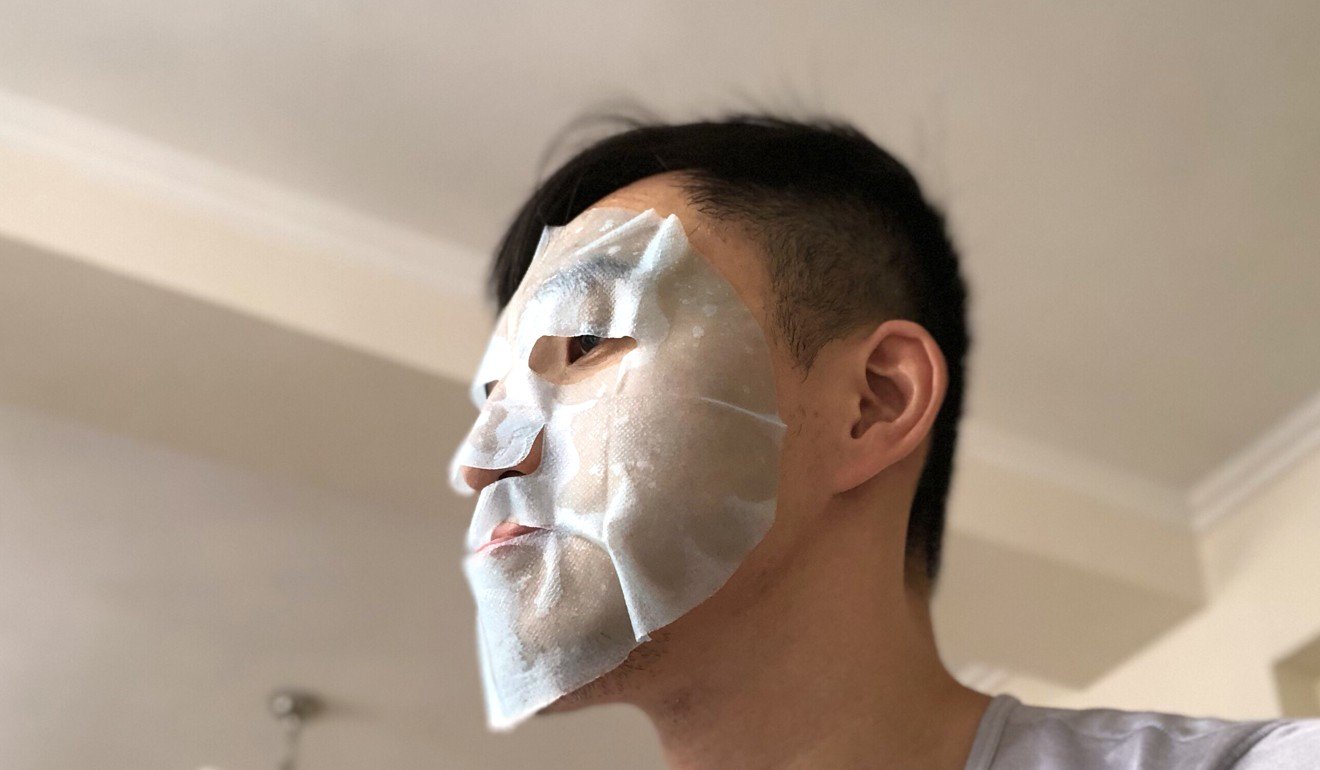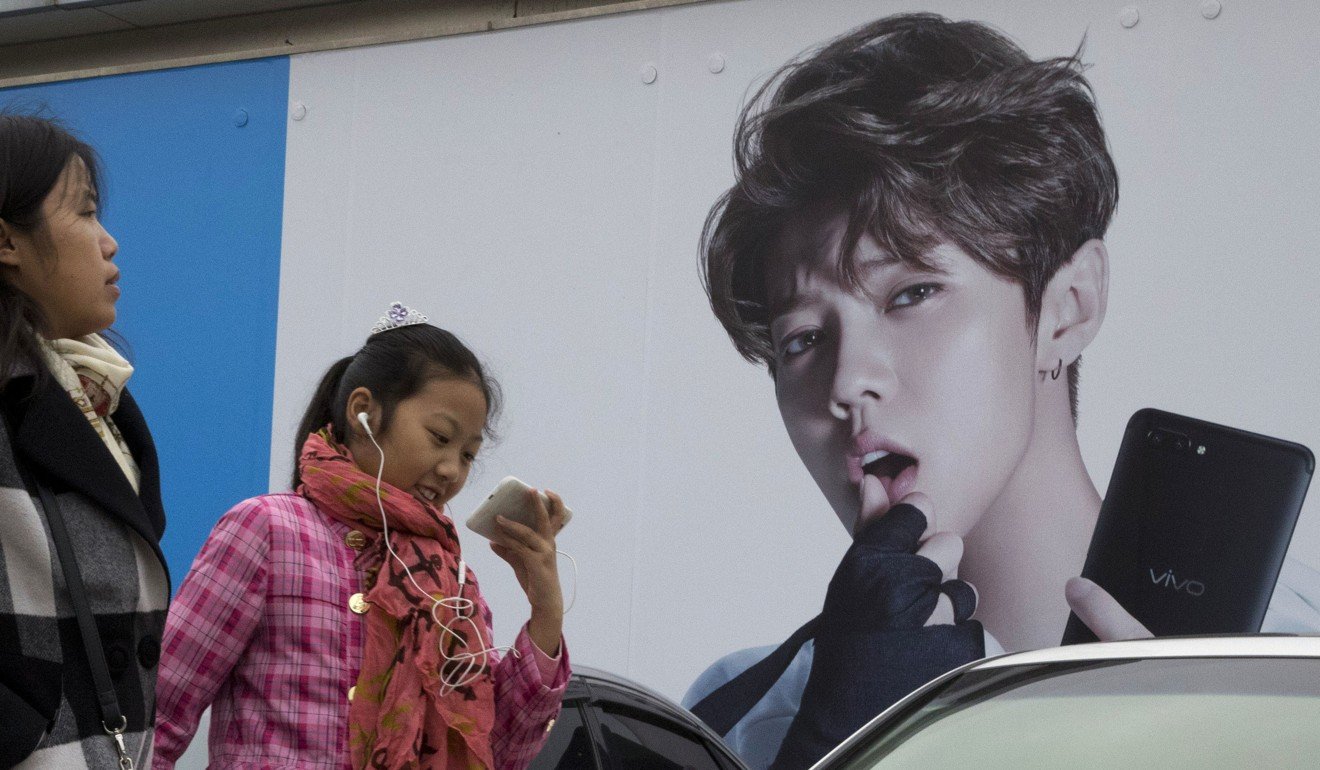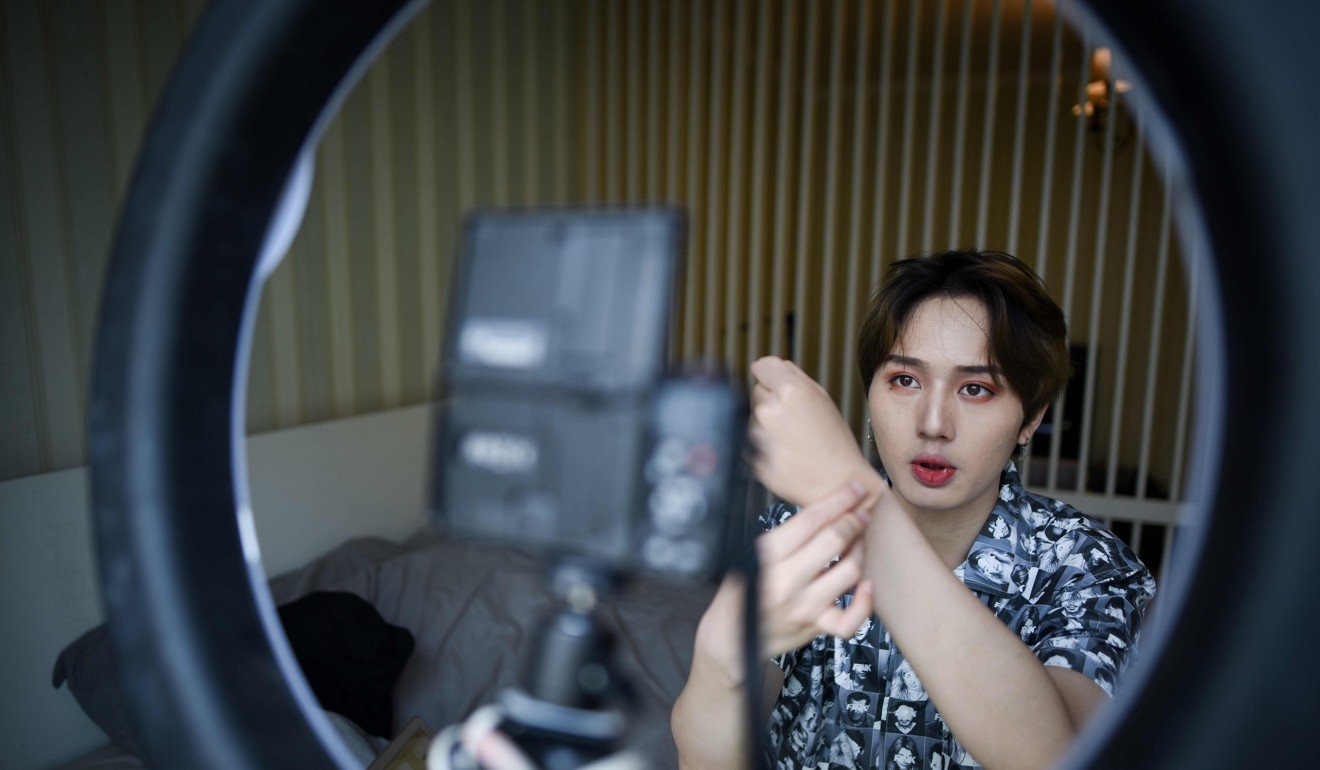
Zhang Dayu wears a face mask. Photo: Handout
One 29-year-old Beijinger nicknamed Xiaoyu said he had started using make-up two years ago because he was suffering from bad acne. Thanks to product recommendations from his male friends, the Beijinger quickly fell down a make-up rabbit hole and now spends 800 to 1,000 yuan (US$117-US$146) a month on cosmetics and skincare.
“Society’s increasing acceptance of men wearing make-up is a definite trend,” he said. “After putting on make-up I feel more confident.”
Xiaoyu normally spends an hour per day on his make-up and skincare routine, and uses a variety of products including BB creams (also known as beauty balms), foundation, face masks, sera and cleansing oils.
In recent years, male cosmetics and skincare have come to represent a small but fast-growing segment of China’s lucrative beauty industry, worth 20.13 billion yuan in total as of May 2018, according to data from Statista.
Research from Euromonitor predicts that annual growth rate for male cosmetics sales in China will hit 13.5 per cent by 2019 – well ahead of 5.8 per cent for male beauty products worldwide.
A similar recent study by online retailers Vipshop.com and JD.com found that sales of male beauty products on these platforms have doubled year on year since 2015. Face masks, BB creams, lipsticks and brow products were especially popular.

Lu Han features on an advertising hoarding in Beijing. Photo: AP
Asia’s appetite for male cosmetics is not only fuelled by viral beauty bloggers and K-pop aesthetic ideals, but also the beauty industry’s keen desire to capitalise on this relatively new audience.
“As there is an increase in male beauty vloggers and men who wear make-up, cultural ideals of who can and how to wear make-up will definitely change,” said Babette Radclyffe-Thomas, a PhD researcher in Asian fashion trends at the London College of Fashion.
“Skincare trends also hold different cultural significance in Asia compared to other regions. Notions of skincare and grooming ideals in this region are interlinked with ideas surrounding cleanliness rather than gender or sexuality.”
But it may still be a long while before wearing full facial make-up will become the norm for Chinese men across all ages, social classes and regions.
“Whether among LGBT or straight people, it is a common perception that men who wear make-up are ‘sissies’ or ‘will scare women’,” said Duan Shuai, media director of the Beijing LGBT Centre.
As a result, many ordinary men who use make-up and skincare prefer a more “natural” look in contrast to male beauty bloggers, whose audiences are largely made up of women and gay men.

Beauty bloggers are helping to promote the trend. Photo: AFP
“These practices are adjusted according to … societal context so that their facial appearance would neither undermine their sense of masculinity nor incur any perceived femininity,” said Simon Chan, a gender studies doctoral student at the Chinese University of Hong Kong.
As for Zhang, using these products “definitely” makes him feel more attractive to women, but he prefers not to go overboard.
“I think the magical part of make-up is that you do it to a degree where people don’t notice, but they’re like ‘looking good today!’,” he said.
Too many men: China and India battle with the consequences of gender imbalance
While “luxury pig men” may be the extreme end of the phenomenon, ordinary men taking more care over their appearance have increasingly been welcomed in Chinese society.
For instance, the top-rated online comments in response to the “luxury pig men” controversy were overwhelmingly supportive.
“Can the entitled straight men in the comments just blow up on the spot?” wrote one user on Weibo, China’s Twitter. “I can just imagine what this kind of person looks like in real life …”








 Reply With Quote
Reply With Quote